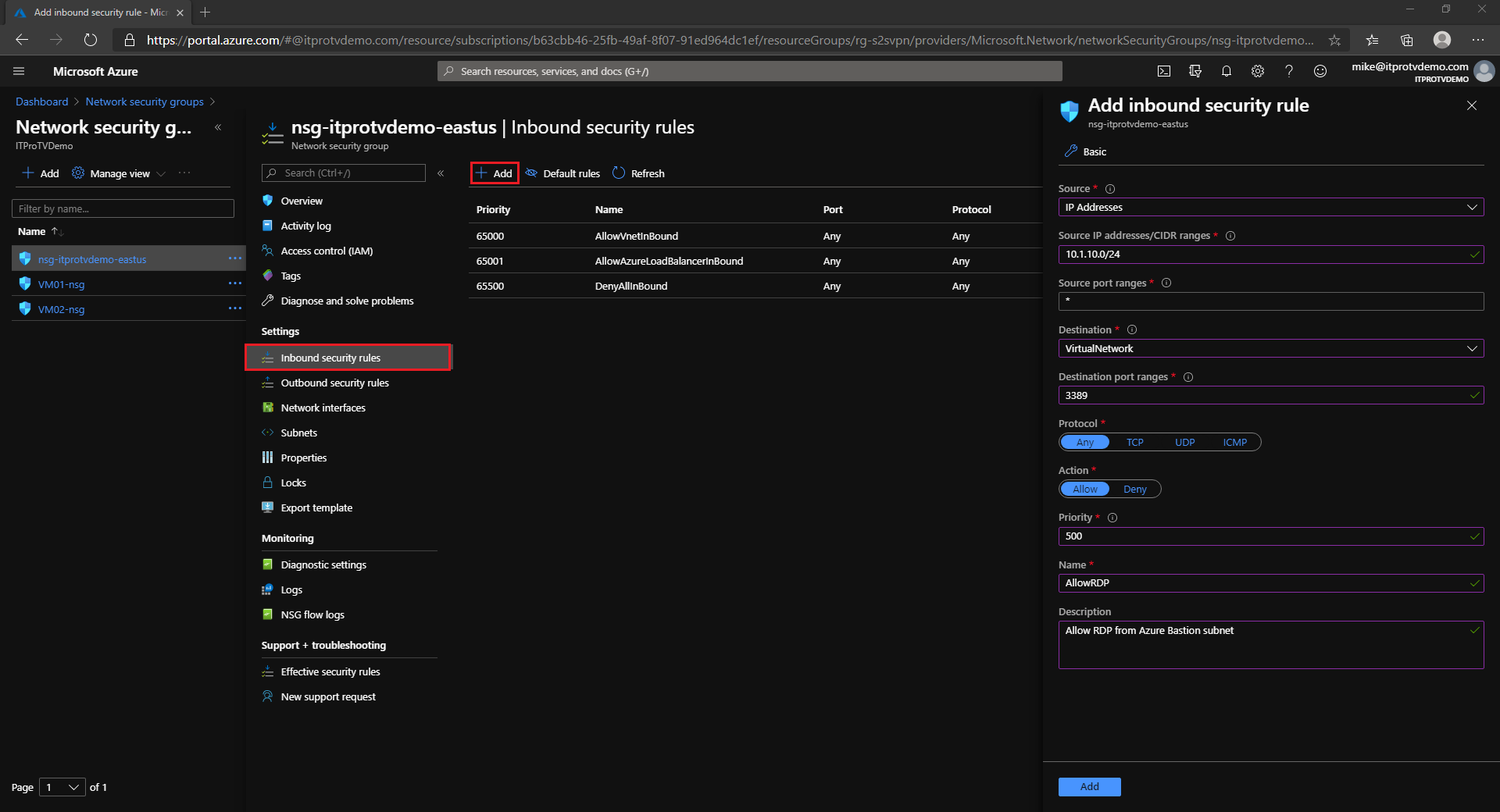
Pros: Reduces the risk of succesfull brute force attacks as the port is only open when you need itĬons: You still need to open port 3389 to public internet leaving you vulnerable within the allotted time frame. You can enable JIT easily from Azure Security Center, configure it through an Azure Virtual Machine blade or configure a JIT policy on a VM programmatically.

After you have finished what you were doing on the VM, it closes the port again. Just-in-time (JIT) VM access only opens the ports when you need them and locks them down to your IP address / range. So if you only have the port open when you need it, you reduce the vulnerability. An astounding number of attempts need to be made to connect through the RDP/SSH ports. This method is best suited for smaller organizations and also involves management of Network Security Group Port rules Just-in-time VM access:īrute force attacks can take days and even weeks to complete. Pros: This effectively reduces outside threats by only allowing the specified on premises machines to RDP into the Azure Virtual Machines.Ĭons: The port is still visible on the internet. Allowing RDP from a specific IP address or range.You should apply these two Inbound Port rules:

You can mitigate this by restricting RDP access to a specified source IP address or range with Azure NSG’s (Network Security Groups).Įvery Virtual Machine will have its own NSG when deployed through Azure. When enabled it is therefore a security risk. The default RDP port – 3389 – allows RDP connection from any IP in the world. However, if you don’t have a Site to Site VPN to your Azure network, there are other options. This is an effective and seamless approach to connect to Azure VM without public IP addresses, reducing the threat of attacks. If you do need to use it for something, the RDP port (usually 3389) will be closed. The public IP address can be removed all together if you don’t need it. With a VPN gateway from the Azure network to the on premises network Azure VMs can be RDP’ed using a private IP address – protected from the prying eyes of the public internet. This keeps your communication with the Virtual Machine off the public internet granting protection against port scanning, brute force and DdoS attacks. The ideal form of RDP connection is RDP across a Site to Site VPN connection. So let’s look at the different options for connecting to your VMs with RDP and how you can mitigate these risks RDP using a Private IP address across a Site to Site VPN There are several challenges facing the IT professionals who need to expose their virtual machines to the public internet by opening ports (RDP/SSH):ġ) Brute force attacks target management ports as a means to gain access to a VMĢ) DDoS attacks by flooding the bandwidth or resources of a targeted systemģ) Port scanning – finding an active port and discovering exploitable communication channels For more users you can add CALs (RDS Client Access Licenses).
Azure bastion nsg windows#
Microsoft developed RDP and includes two administrator accounts for simultaneous RDP onto a server in Windows Server. This lets IT administrators support a huge organization from the comforts of their own desk. Remote Desktop Protocol (RDP) is well-known and commonly used to access remote computers and servers. So when you need to connect to your Azure Virtual Machines to manage them, there are a range of security and connectivity issues. Hackers are always searching for vulnerabilities via ports connected to public IP addresses. But with new solutions come new challenges. This has undoubtedly made it possible for a lot of small & medium businesses to scale fast and saved established companies fortunes. The Azure cloud services have helped companies around the world move from on premises servers to Virtual Machines available at a moments notice. We will cover the Azure VM connectivity options – including the new Azure Bastion – here.

Luckily there are some great solutions like Just-In-Time VM Access without risking port scanning and brute force attacks.
Azure bastion nsg professional#
How can you keep your entire Azure Virtual Network easily accessible and secure at the same time? Many an IT professional has had sleepless nights trying to figure it out.


 0 kommentar(er)
0 kommentar(er)
